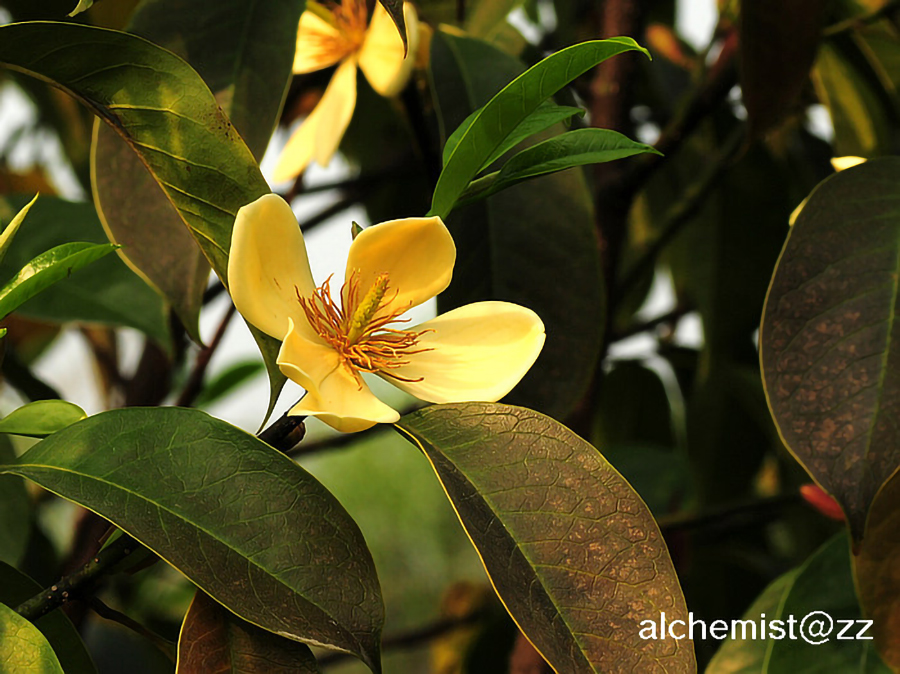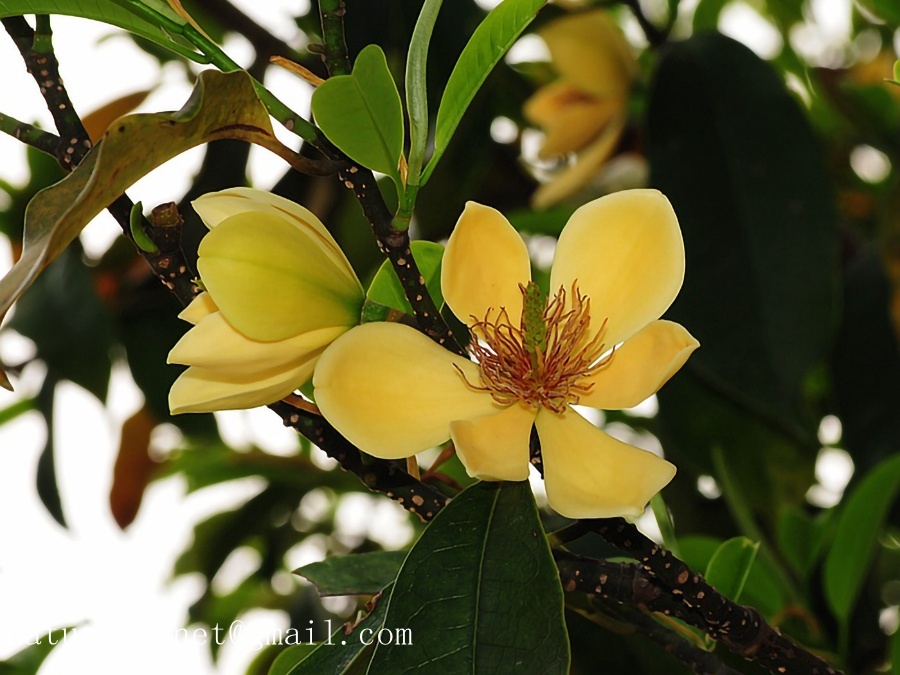- Scientific Name: Magnolia chapensis (Dandy) Sima
- Ref: Yunnan Forest. Sci. Technol. 2001(2): 29, 2001.
- Chinese Common Name: 乐昌含笑 Lèchāng hánxiào, 景烈白兰 jǐngliè báilán
- Family: Magnoliaceae
- Genus: Magnolia
- Distribution: Evergreen broad-leaved forests; 500-1700 m. N and W Guangdong, NE and SE Guangxi, Guizhou, S and W Hunan, S Jiangxi, SE Yunnan [N Vietnam].
Trees, 15-30 m tall, to 1 m d.b.h. Bark gray to dark brown. Twigs glabrous or nodes grayish puberulous when young. Petiole 1-2.5 cm, adaxially furrowed, glabrous or puberulous when young but later glabrescent, without a stipular scar; leaf blade obovate, narrowly obovate, or oblong-obovate, 6.5-15(-16) × 3-6.5(-7) cm, thinly leathery, adaxially deep green and glossy, secondary veins 9-12(-15) on each side of midvein, reticulate veins sparse, base cuneate, broadly cuneate, or obtuse, apex acute to shortly acuminate, acumen obtuse. Brachyblasts 4-10 mm, appressed gray puberulous, with 2-5 bract scars. Flowers fragrant. Tepals 6, in 2 whorls, pale yellow; outer tepals obovate-elliptic, ca. 3 × 1.5 cm; inner tepals narrower. Stamens 1.7-2 cm; connective exserted and forming a ca. 1 mm mucro; anthers 1.1-1.5 cm. Gynophore ca. 7-10 mm, densely silvery appressed puberulous; gynoecium narrowly cylindric, ca. 1.5 cm; carpels ovoid, ca. 2 mm; ovules 6 per carpel; styles ca. 1.5 mm. Fruiting brachyblasts ca. 2 mm. Fruit 3.5-10 cm; mature carpels ellipsoid to ovoid, 1-1.5 × ca. 1 cm, base broad, apex with short and curved tip. Seeds red, ovoid to ellipsoid-ovoid, ca. 10 × 6 mm. Fl. Mar-Apr, fr. Aug-Nov. (Flora of China)


